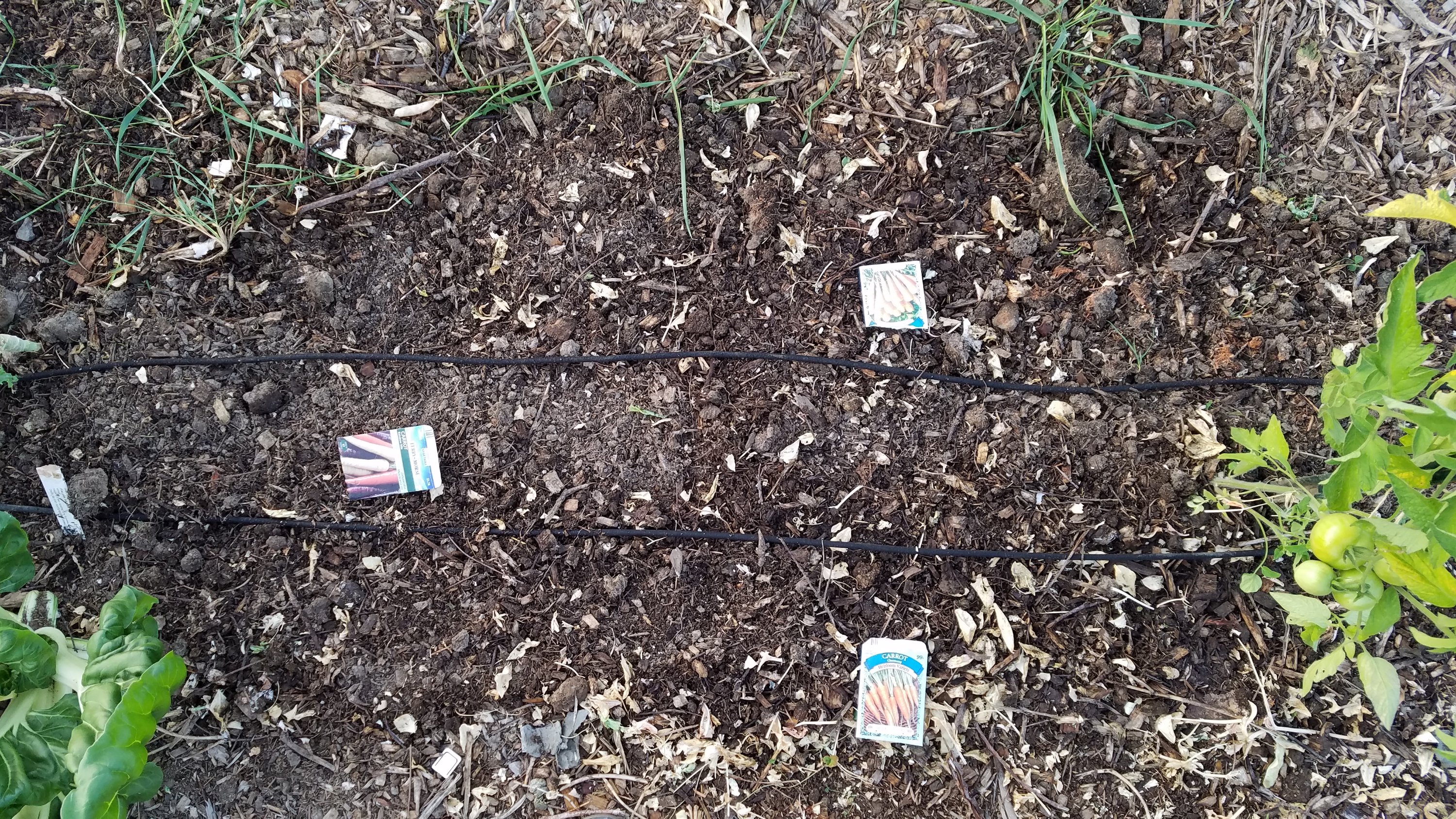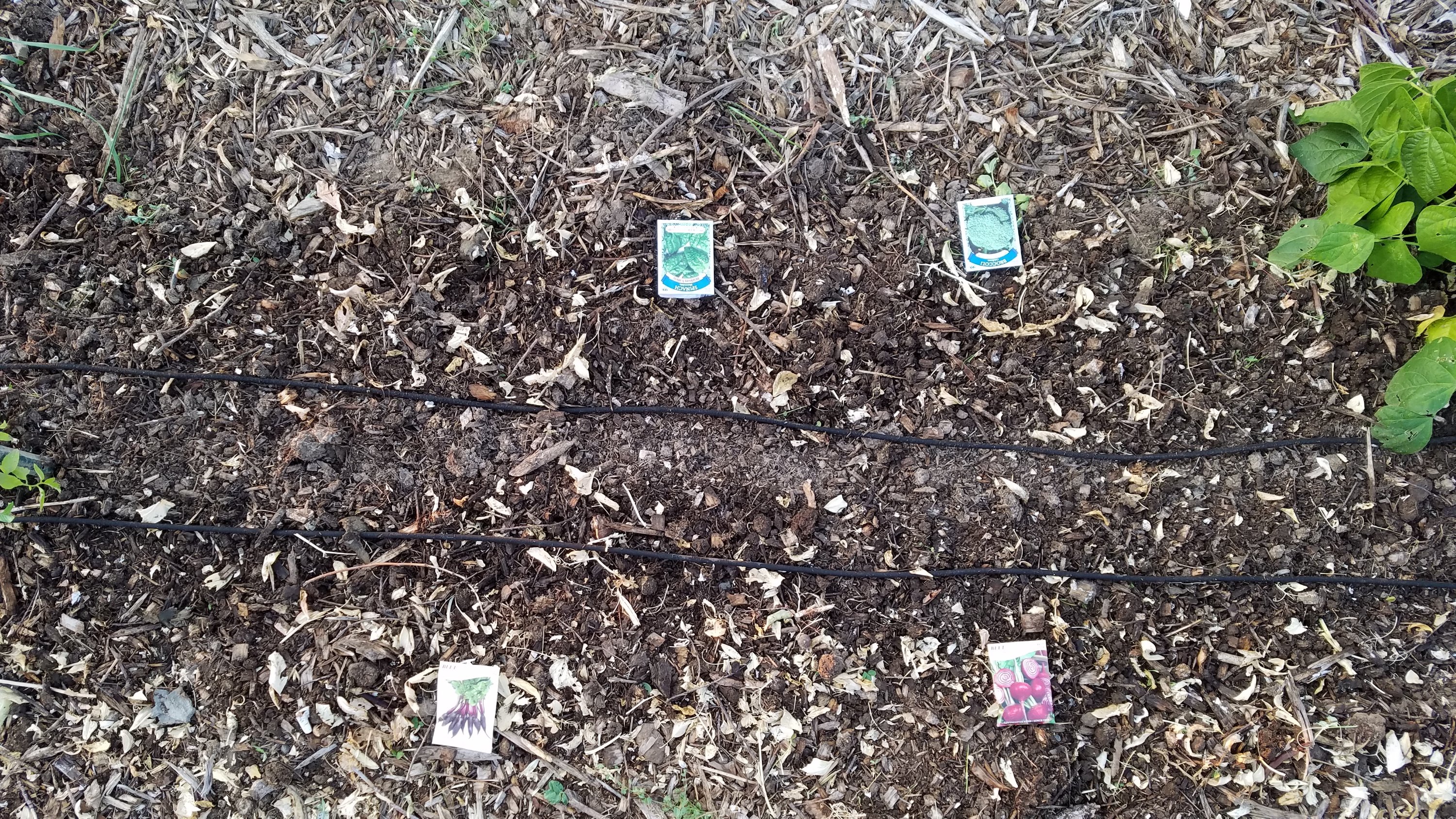A couple days ago we got a male duck on loan from our neighbors. We might have ducklings sometime.
Heather seeded beets and carrots today.
A couple days ago we got a male duck on loan from our neighbors. We might have ducklings sometime.
Heather seeded beets and carrots today.
The peas we seeded on March 25 are starting to sprout.
The kale and chard are a bit yellowish but surviving. I think nitrogen availability must be lower when the soil is cold, perhaps due to decreased microbial activity.
The basil got killed by the cold nights, but most of the other herbs are doing well, especially both types of parsley.
The plum tree is done blossoming, the pear tree is in full blossom, and the young fruit trees are starting to grow again.
I transplanted kale and chard, and I direct-seeded Oregon sugar pod peas, which were really productive last year. This time, I only seeded one row, leaving more room for planting beans later.
Heather transplanted rosemary, parsley (curly and flat), sweet oregano, and Italian basil (with cloches covering the oregano to promote growth and basil to protect from frost).
I noticed chives growing next to the well.
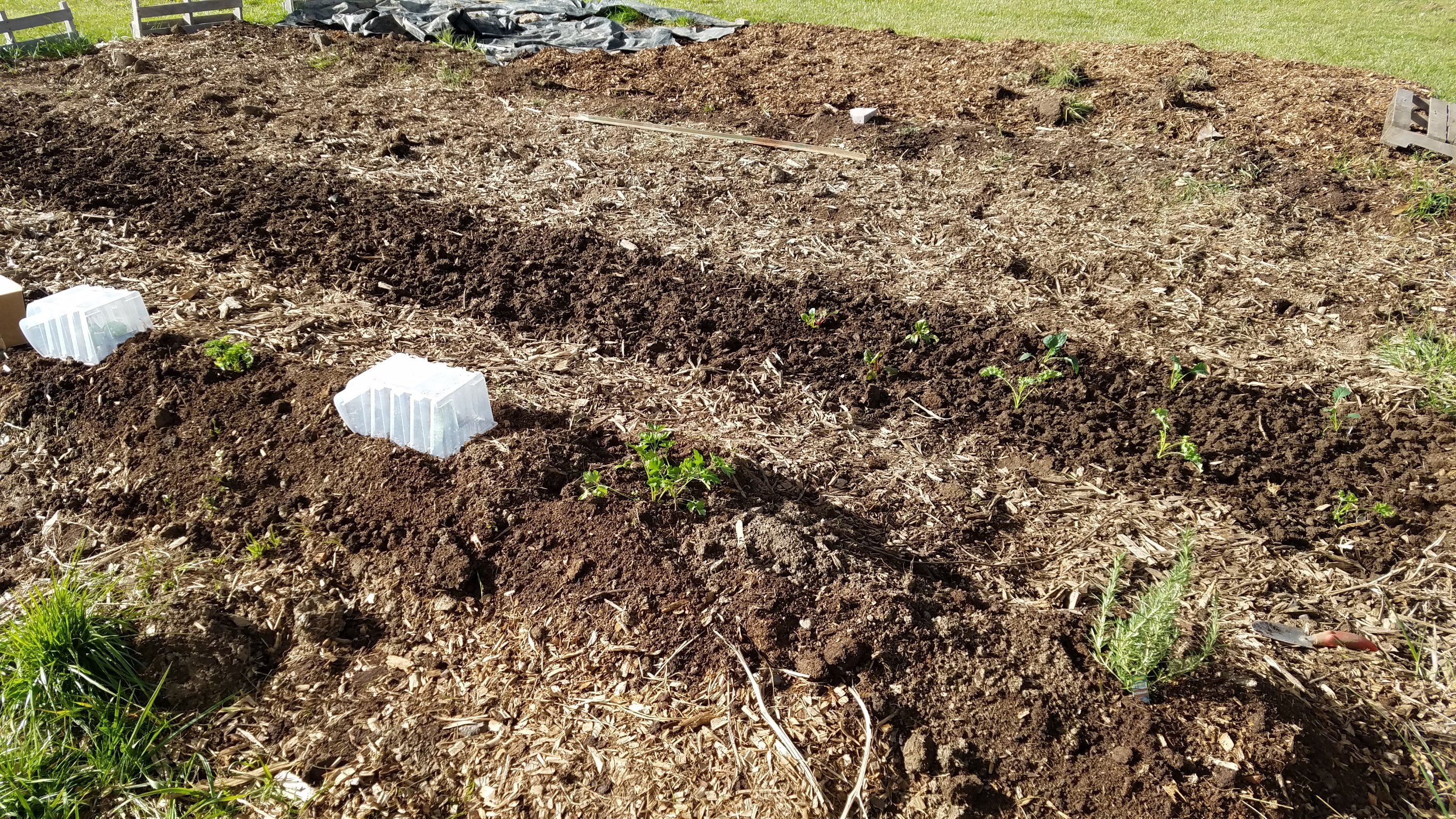
Isaac and Heather seeded the pasture with 25 pounds of all-animal pasture blend. It is supposed to rain off-and-on for the next week, so that should help with germination.
Heather sold the three Gotland-Shetland sheep for $300. It’s time to focus on revitalizing the pasture now.
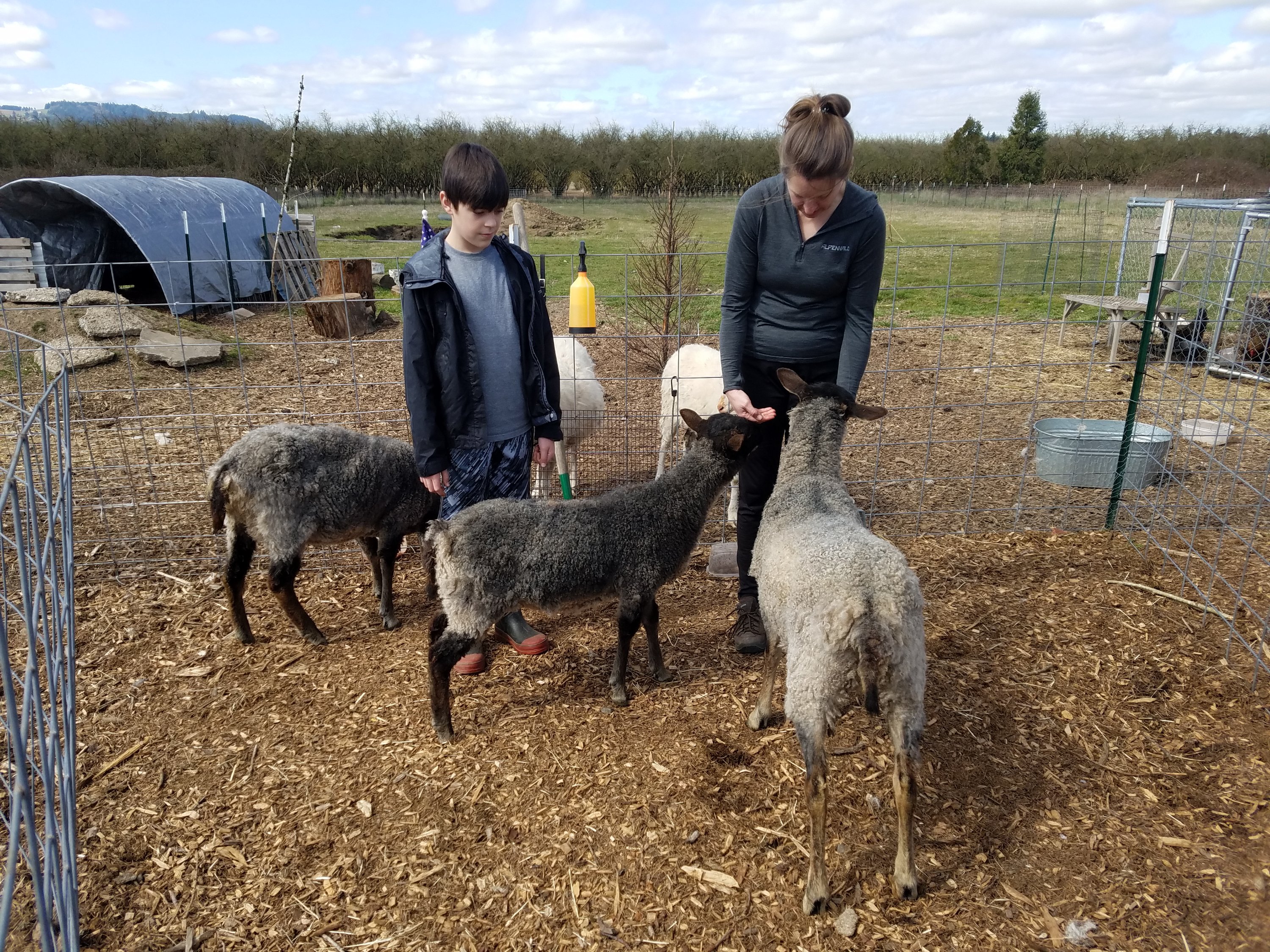
The chickens have been quarantined in a small dog kennel attached to the coop. There was no other effective way to keep them in the pasture, and we’re about to plant the garden, so they cannot be allowed to escape again.
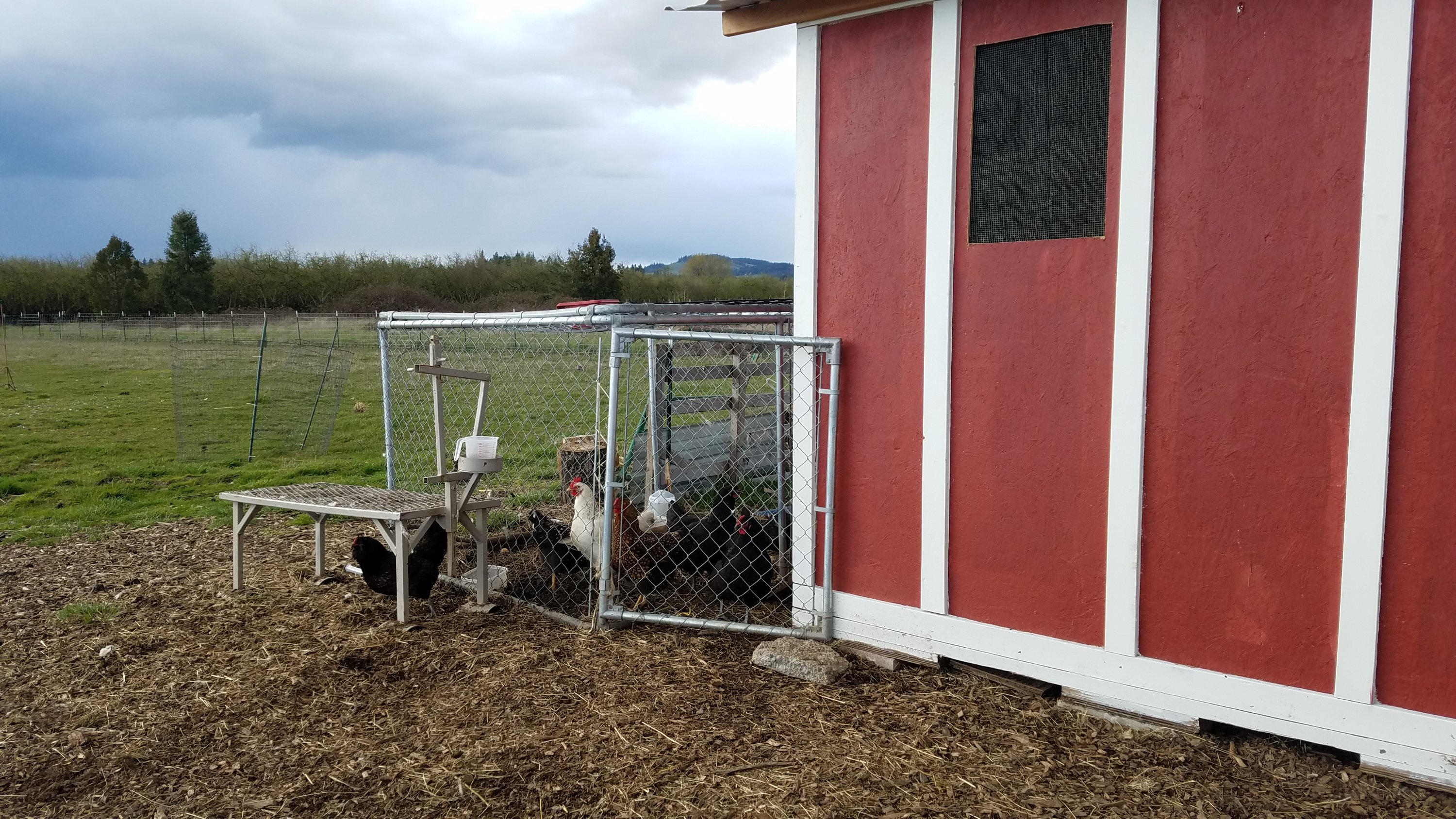
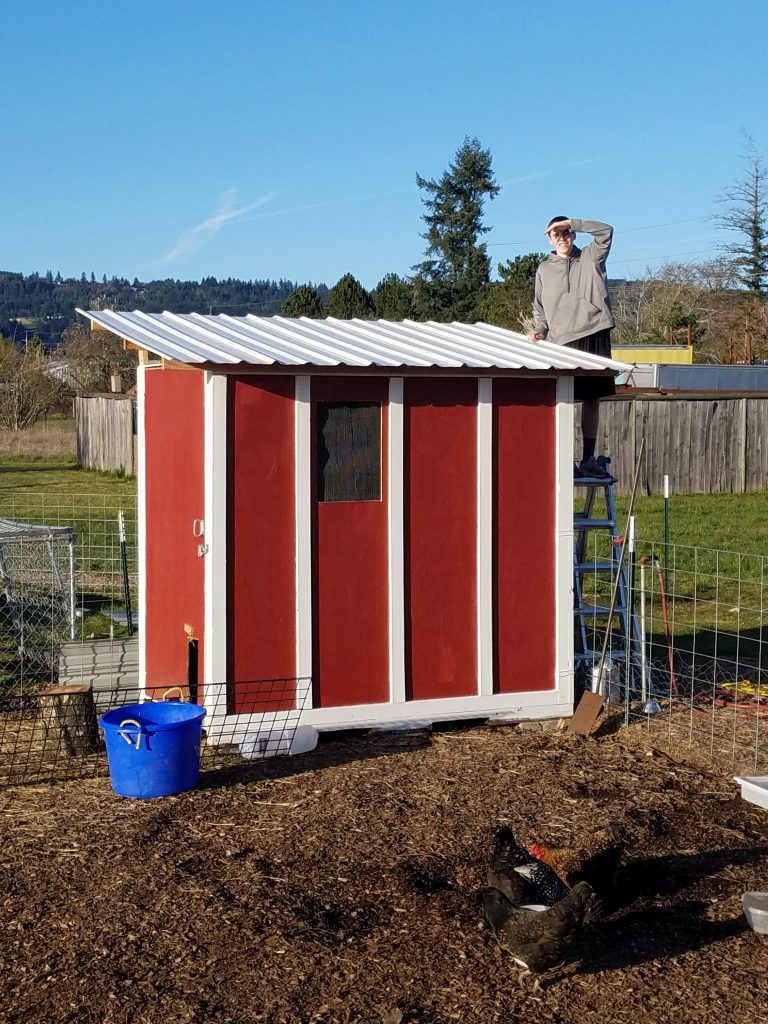
A few weeks ago, Jon told us about a U-Haul location that was surplussing moving pods for $5, so we picked one up and turned it into a chicken coop. Jon helped us move to the pasture with his forklift. We’ve already been getting way more eggs from the chickens and duck. Today we finished the roof using salvaged sheet metal that Jon found.
We’re still failing at keeping the chickens in the pasture. We have to solve that problem before we plant the garden.
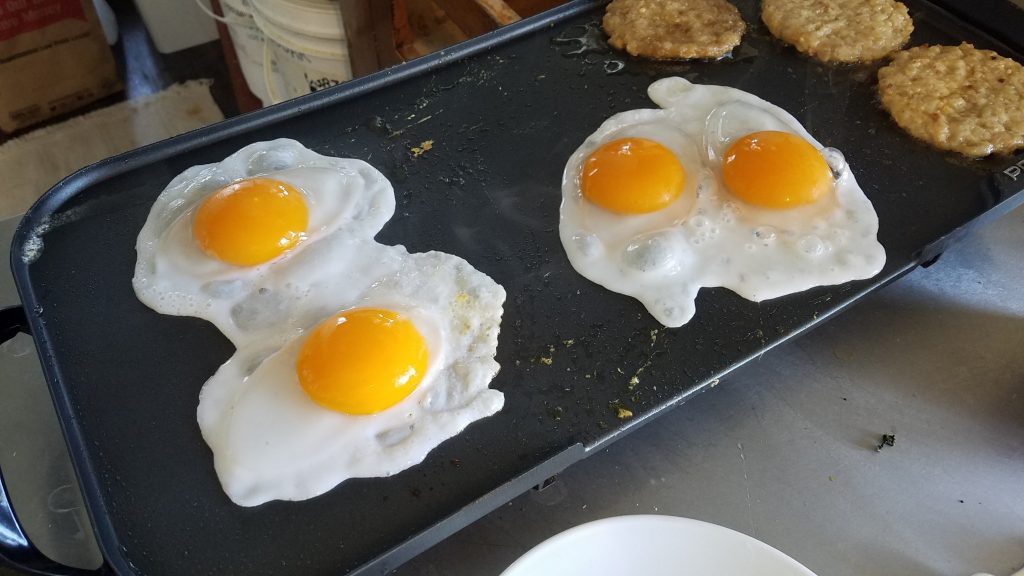
All of a sudden we’re getting duck eggs. We found seven of them yesterday in the sheep shelter. Apparently they sell for $12 a dozen. They’re huge and have huge yolks.
I pruned the grapevines, plum tree, and pear tree. I think the grapevines are starting to look more like they should.
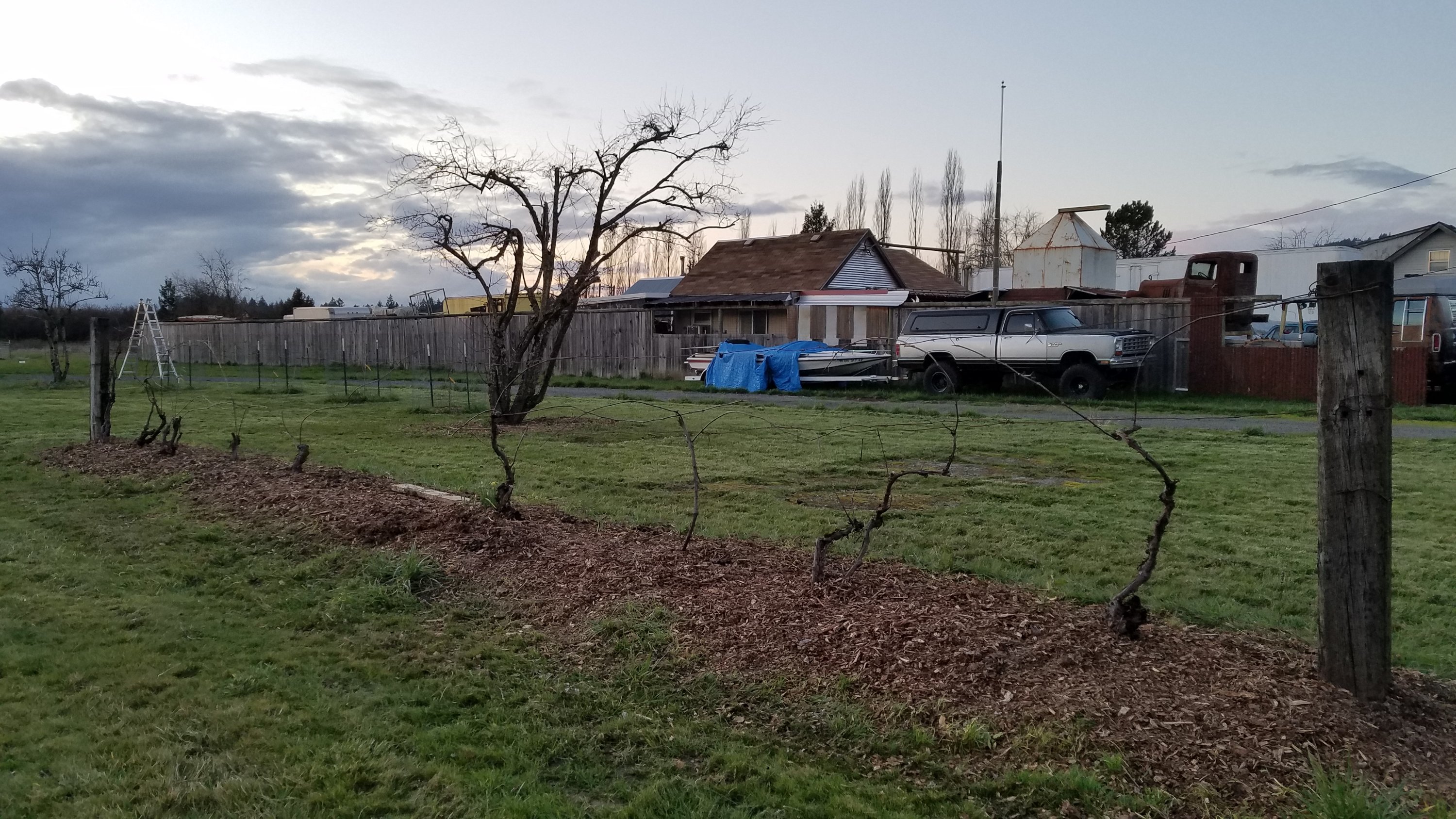
I pruned the pear tree lightly, after a heavy pruning last year that resulted in not much fruit.
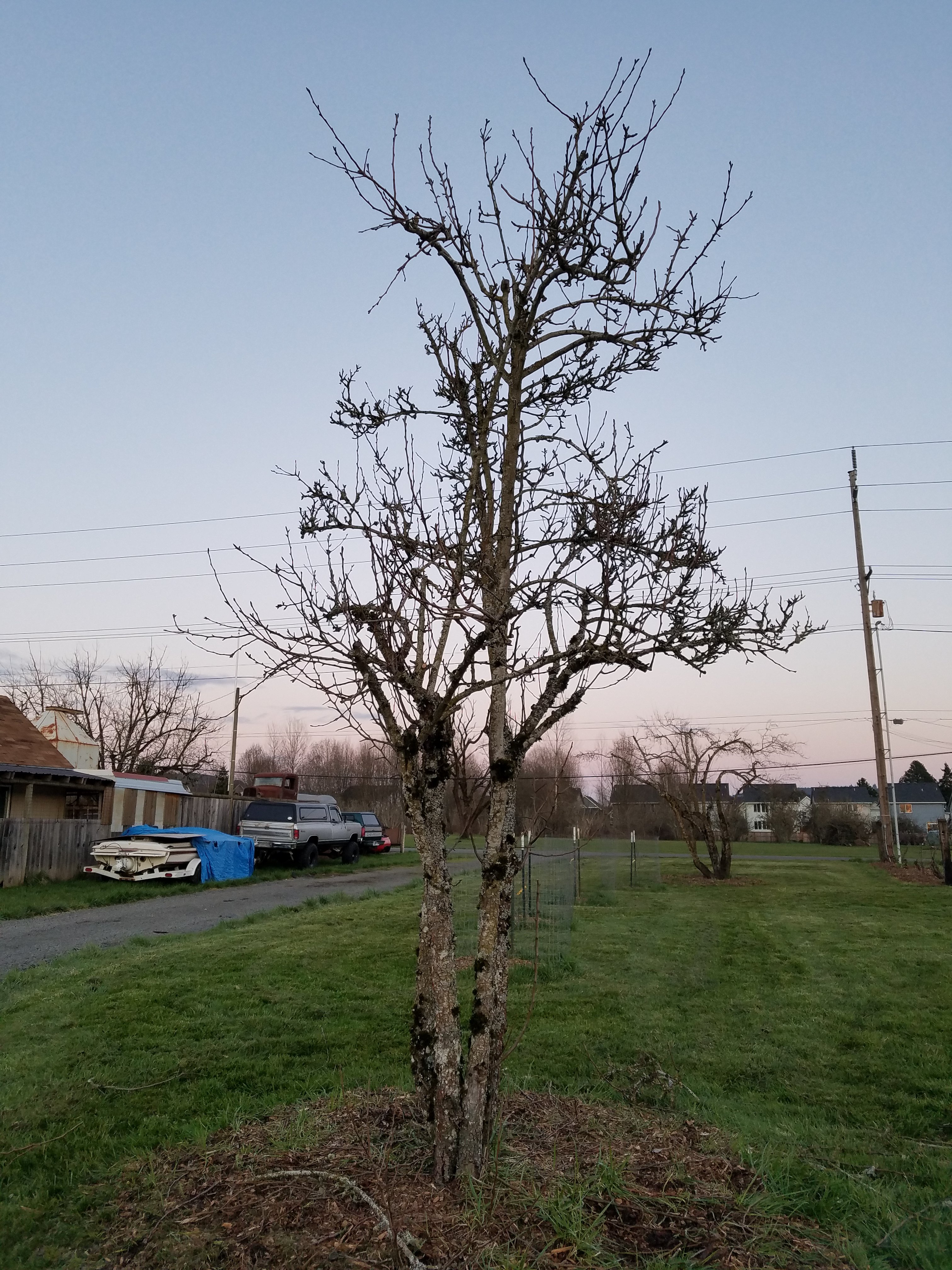
I pruned the plum tree heavily this year, trying to open the canopy so lower branches will grow and bringing down the overall height of the tree. We’ll see what happens this year, but last year we had more plums than we could handle.
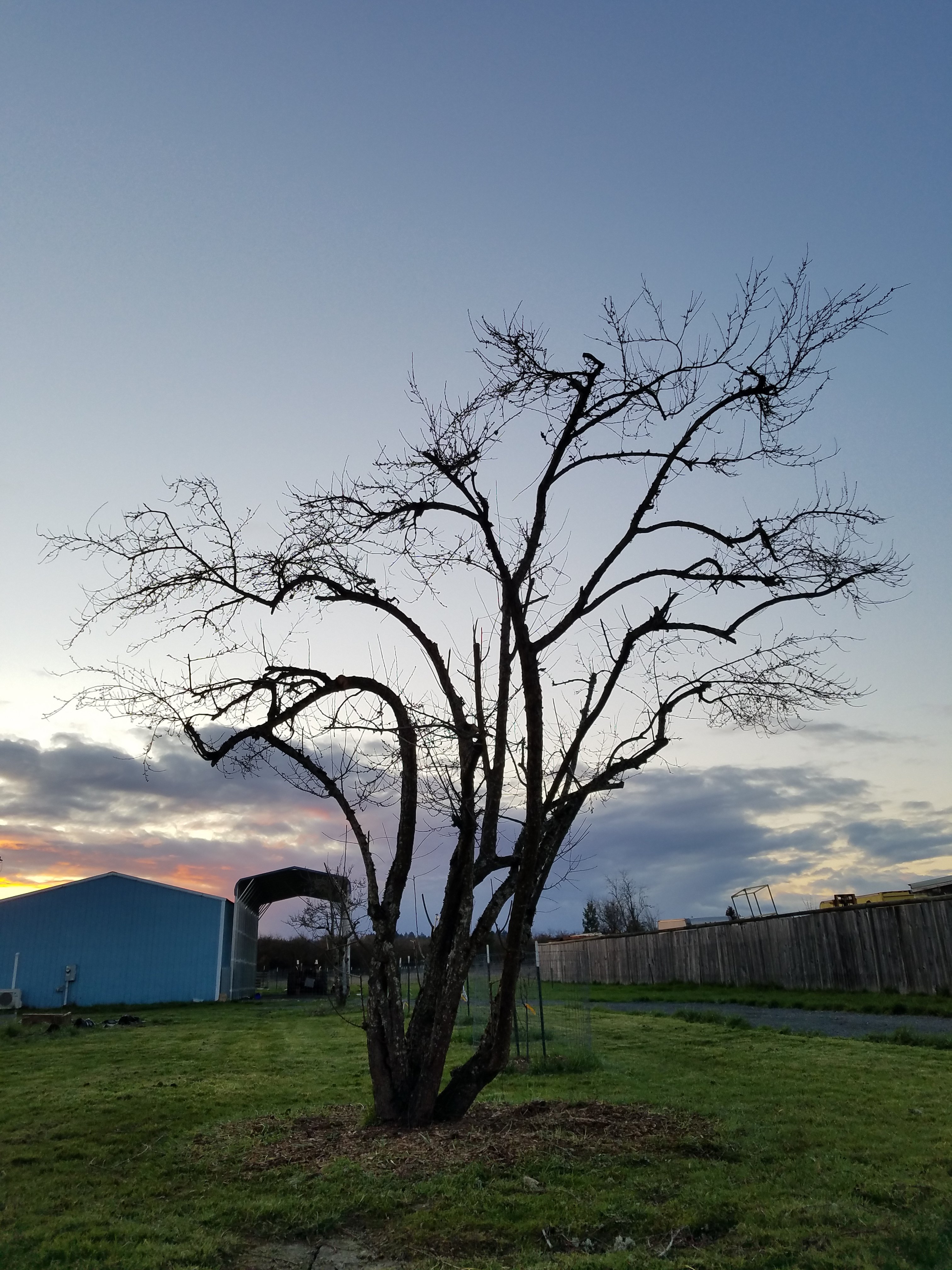
Today was also shearing day for the three wool sheep. We had them fast from food and water for about 18 hours before shearing. The shearer said it might be better for these sheep to be sheared twice a year to avoid felting. He also said their hooves are looking good and dont need trimming, and they’re not too fat or skinny, but to not reduce their feed. Shearing cost $100 for the three sheep. The sheep look kinda funny now… and not nearly so big and imposing.
The John Deere riding mower died last fall. It would barely idle, nothing more. We replaced the carburetor, but it didn’t help. It turns out the intake valve wasn’t opening enough. So I took apart the crankcase and checked things out. The camshaft lobe that drives the intake valve was worn down to nearly nothing. The hydraulic lifter was also stuck. So I ordered a new camshaft and lifters for $40. Today I put everything back together, and it runs great!
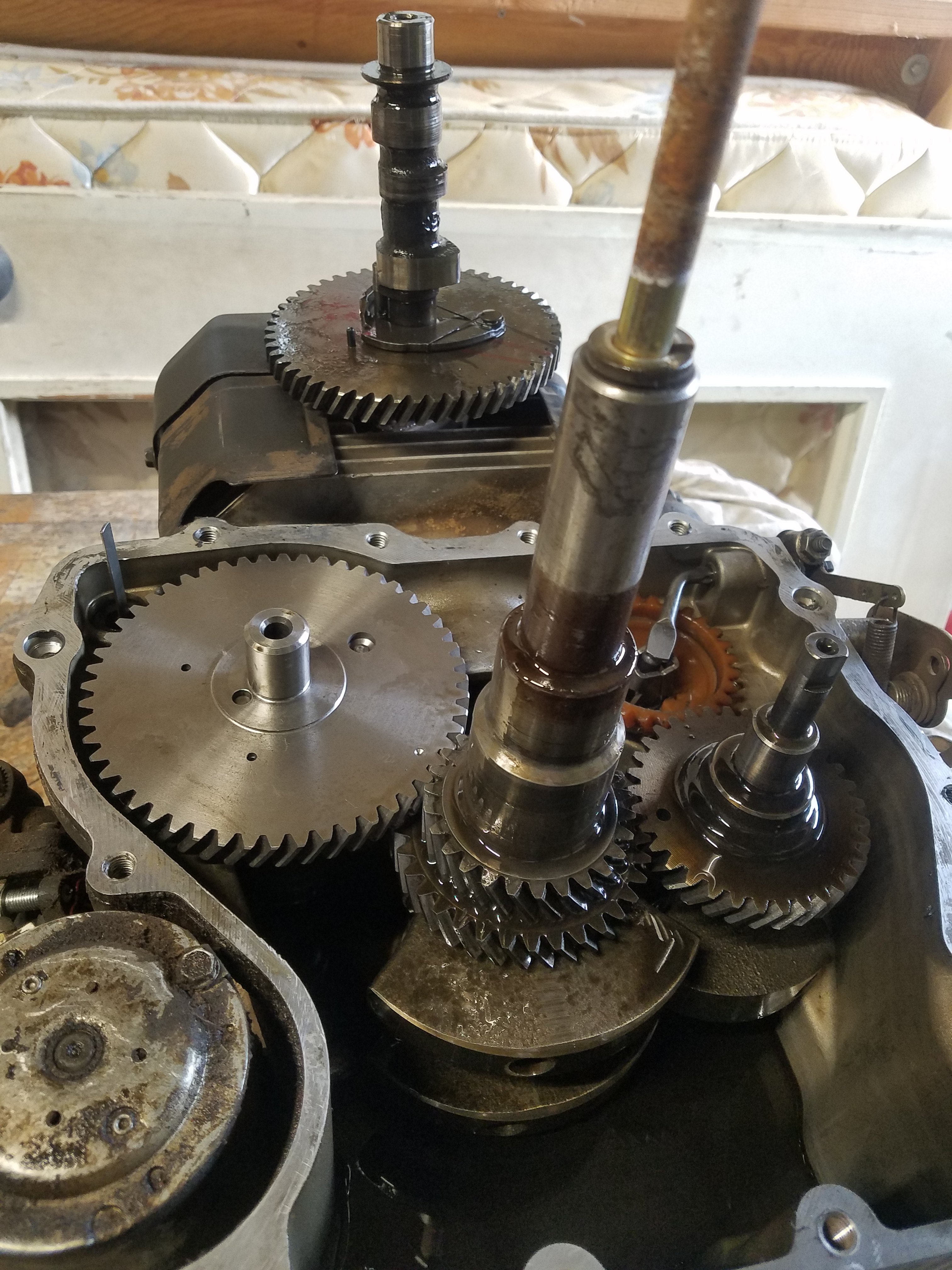
In the meantime, our neighbor Jon found a two-cylinder Craftsman mower for us. It ran but not well. I ordered a tune-up kit and Isaac helped replace the carburetor, filters (air, fuel, oil), and oil. It’s up and running now as well.
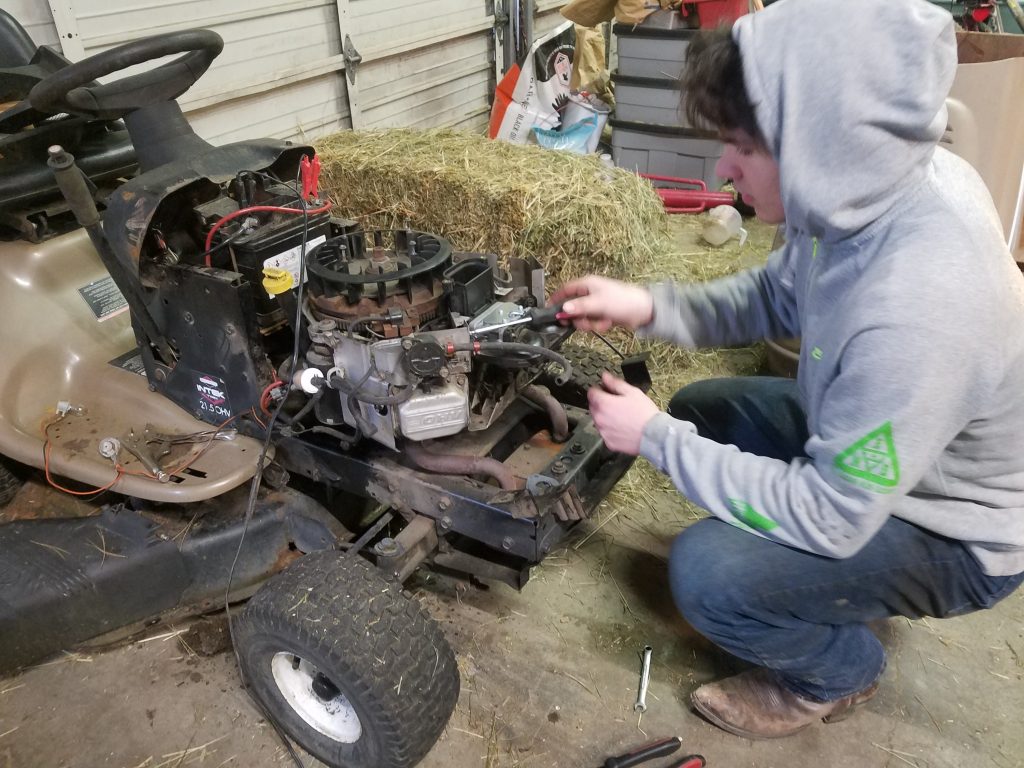
So now we have two riding mowers, a garden tractor, a tow-behind field mower, and of course, the Case tractor. The clutch has gone out on the Case, so we’re clearing space in the barn to bring it in, split it, and fix it.
The swale in the pasture went from empty to half full in the past 24 hours. Now we’ll see how long it takes to drain before it needs to absorb rainfall from the next storm.
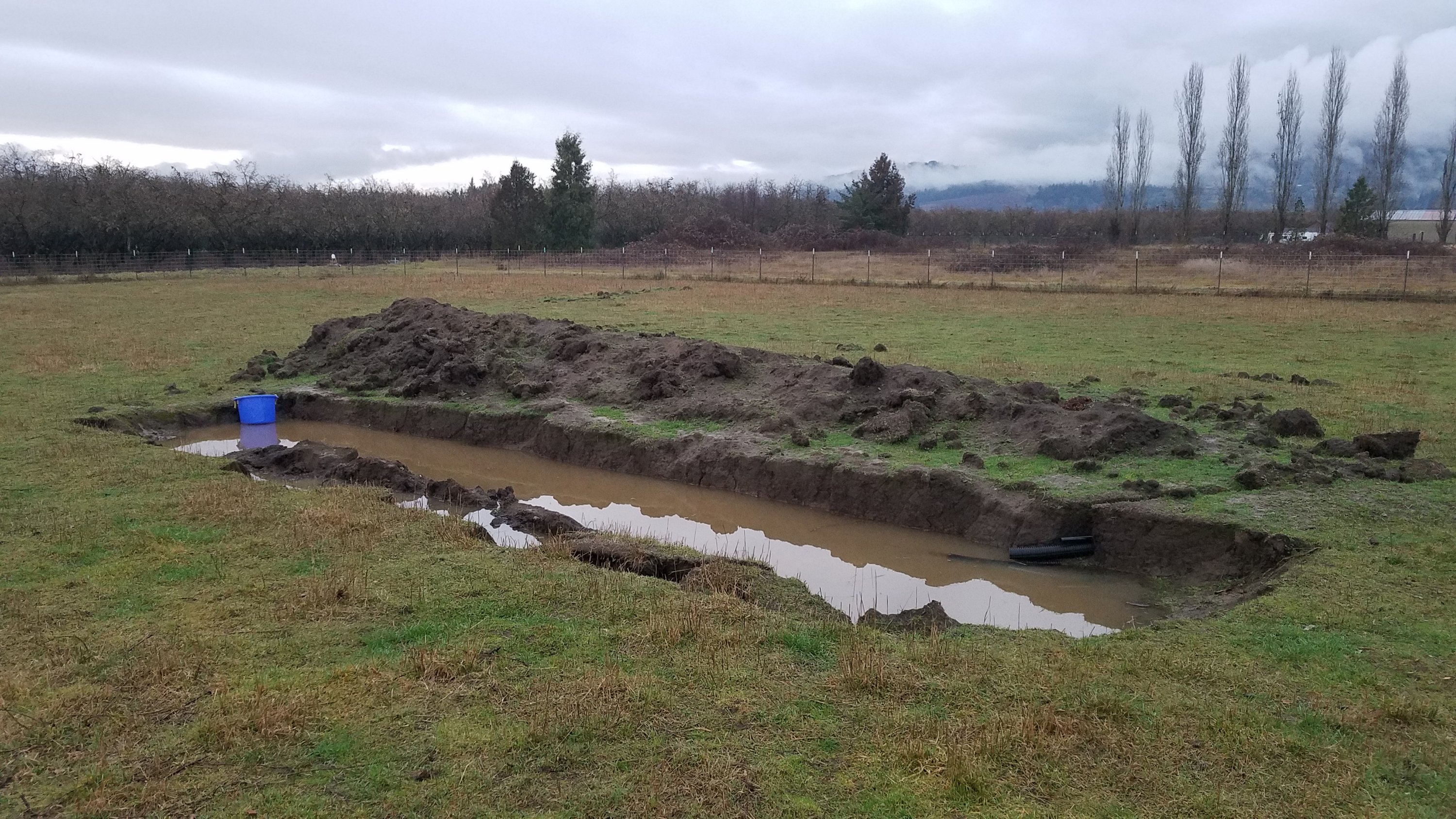
I bought a winter-blooming heather plant and planted it at the edge of the ditch by the road.
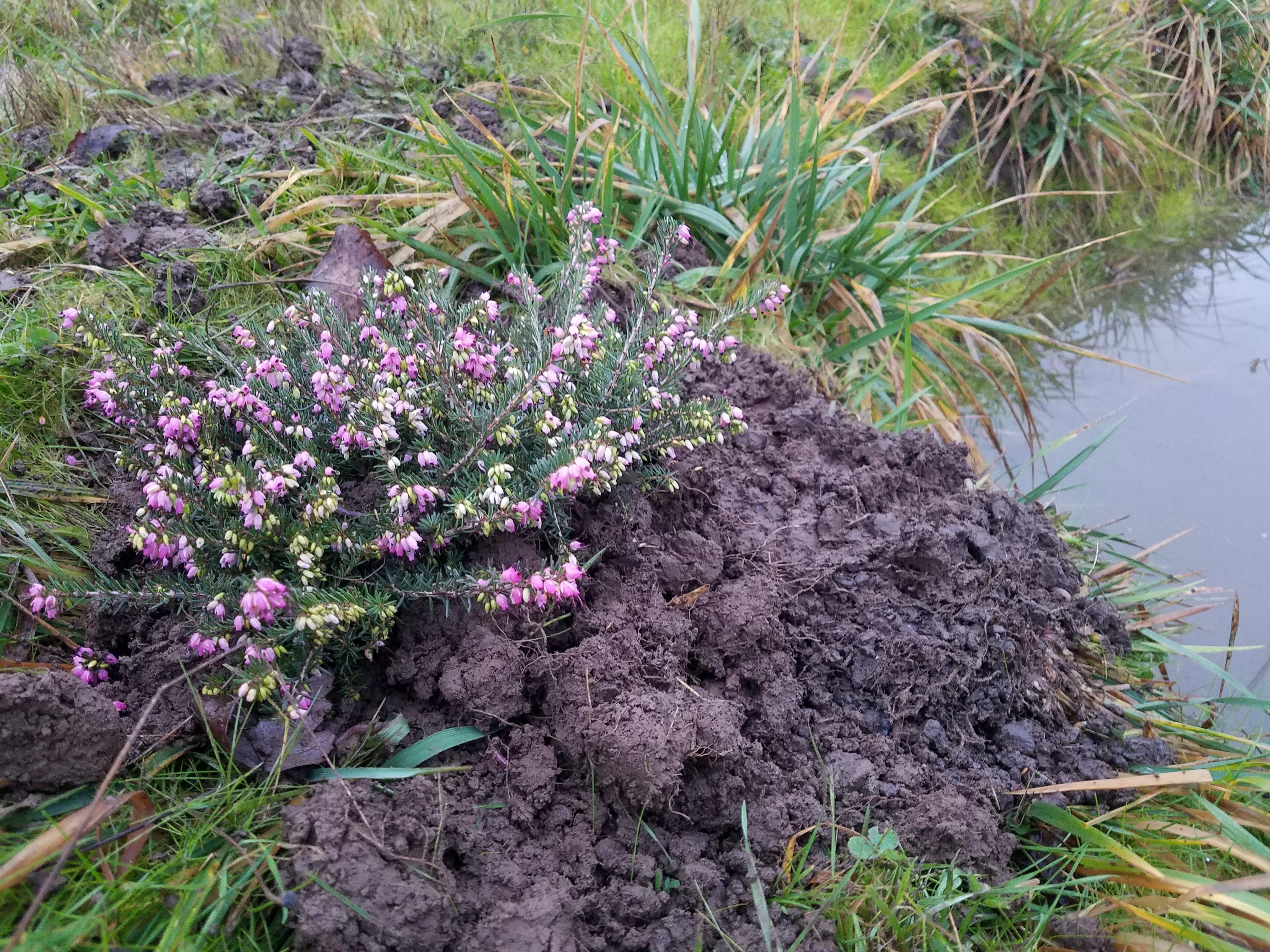
Our neighbors’ fields were fertilized today.
Yesterday, our friend help us get the town-behind lawn mower that our neighbor gave us running. A kit with a carburetor, spark plug, fuel filter, and air filter was $20. Next I need to buy new wheel bearings for it and for the small tractor trailer.
We changed the oil and spark plug in the Sears tractor.
The Case tractor is not doing so well. The past few weeks, it has been hard to start, which was not a problem before. I replaced the spark plugs today. Most of them were black with carbon. I also topped off fluids. It took about 3 quarts of fluid in the torque tube and a gallon of oil in the transmission. The 3-gallon cooling system took a gallon of coolant. I replaced the engine oil, and there was coolant in the oil. That probably means it has a bad head gasket. Also, yesterday the clutch started to fail. Today I had to use the hand clutch, and even then, I had to turn off the tractor to change gears. One of the back wheels still has a slow leak, too.
I re-routed the temporary pasture fencing on the north side of the barn so that I can access the tractor parking area again. The sheep will probably have that extra pasture area finished off in the next two weeks or so.
The chickens have finished off my kale. 🙁
A few months ago, we got to use a hydraulic log splitter to split a bunch of wood we had gotten from arborists. Today, we stacked it along the west side of the barn, probably about 1.5 cords. We don’t have a woodstove, though.
We also reapplied wood chips around the young fruit trees after adding some landscaping fabric.
The sheep have mowed the entire pasture down to stubble, due to our not implementing paddocks. Heather has installed some temporary fencing allowing them to graze the area north of the barn.
We haven’t gotten any chicken eggs for months. But they don’t have a proper chicken coop in which to lay eggs, nor are we giving them any feed beyond table scraps and what they find in the pasture.
Something happened to the carburetor on the John Deere mower and it will barely idle at full throttle. I fiddled with it a bit, then ordered a new carburetor. At about $15 to buy new, they’re hardly worth trying to troubleshoot.
The Case tractor has a rear left tire that loses air over the course of about a week. I need to see if I can remove the wheel so I can take it to a tire store for repair. Otherwise, it’s probably about $100 for a field service call.
We’re still getting some kale from the garden, but the chickens have been escaping the pasture now that we extended it for the sheep, so the kale isn’t going to last much longer.
Our squash harvest… not bad for being an afterthought planting.
Info I found said to leave squash on the vine as long as possible, but harvest before heavy frost.
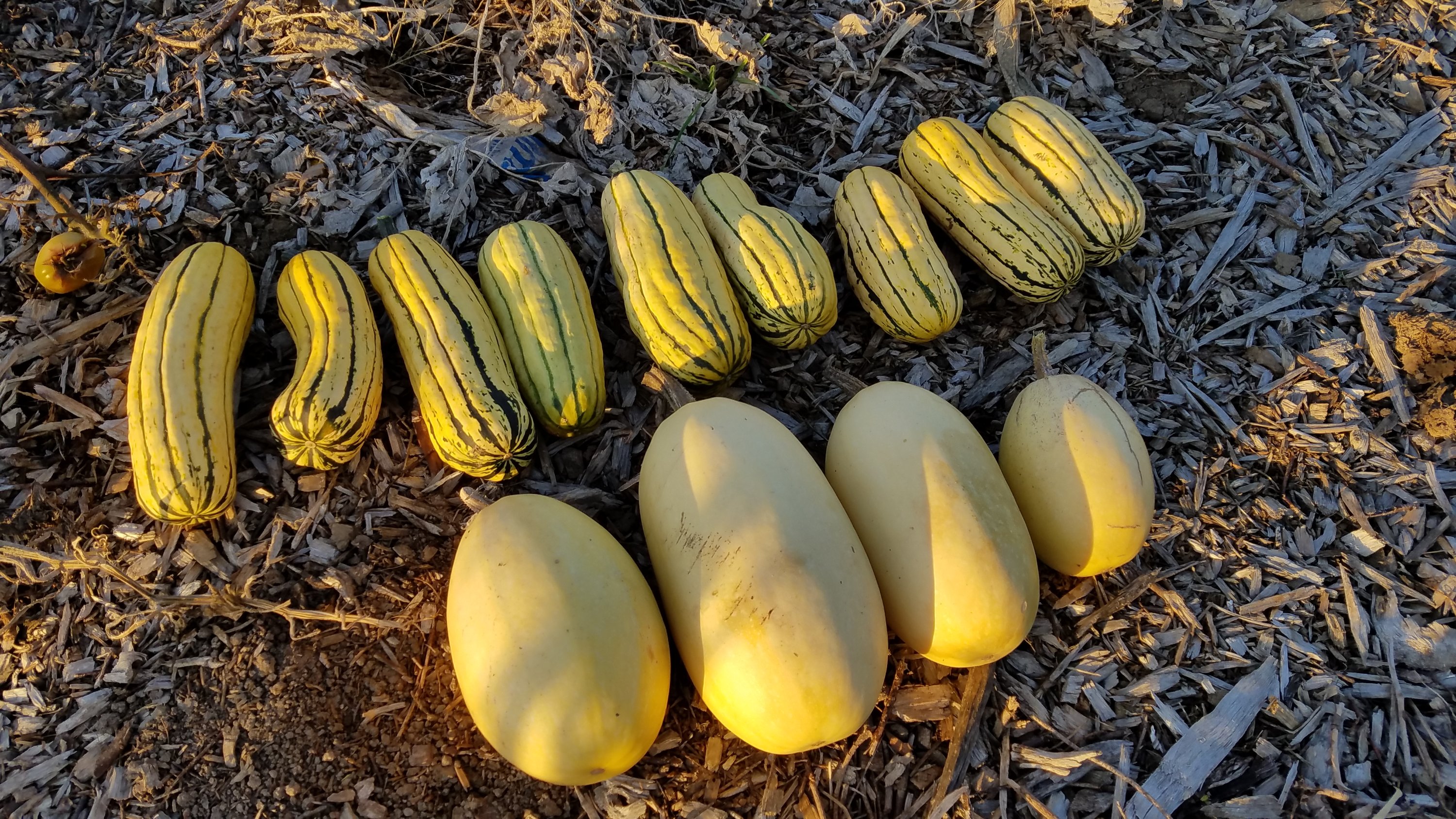
We had our first significant frost last night. Frost was in the forecast about a week ago, so we harvested our basil, but it was a light frost.
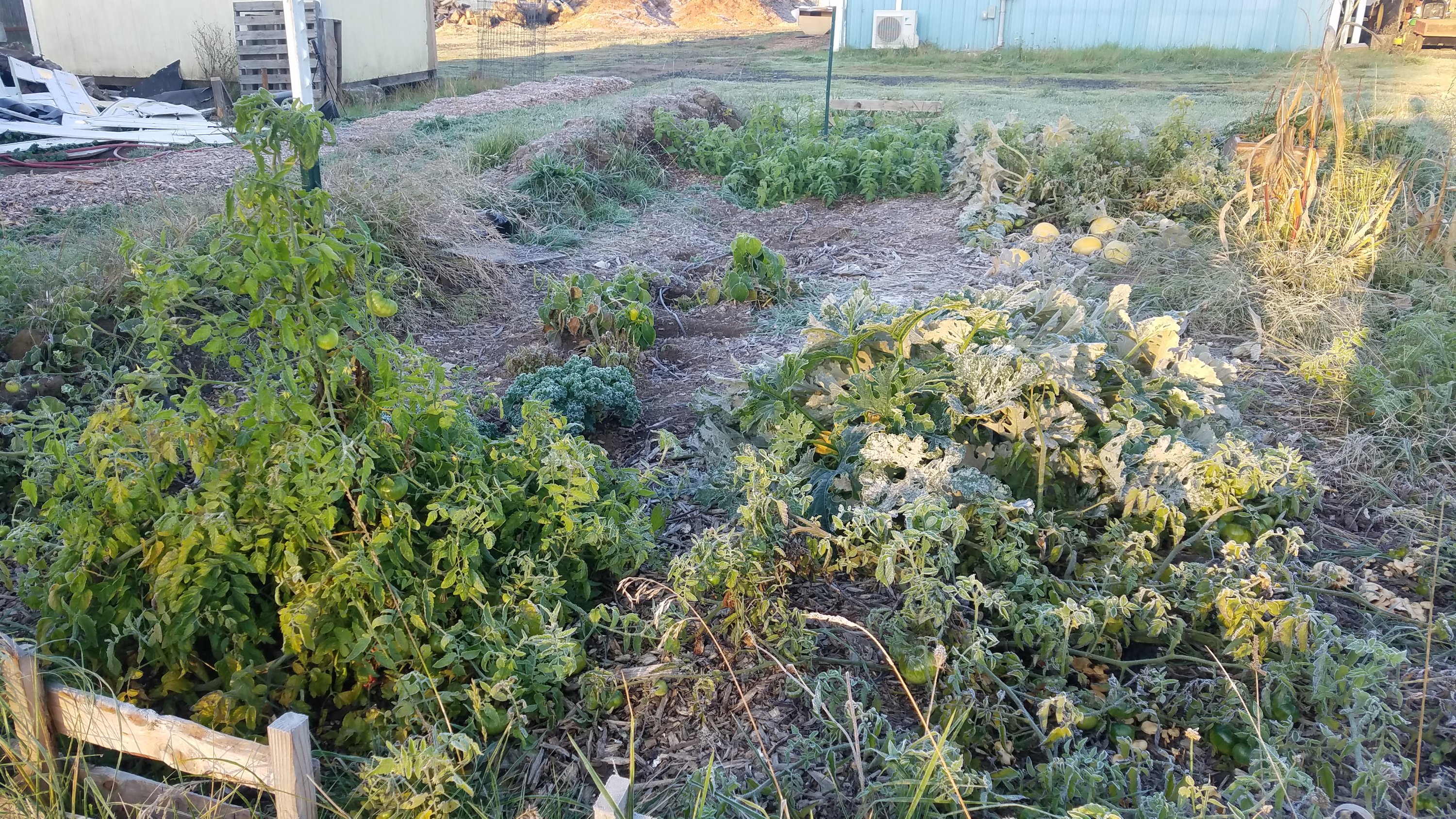
The remaining Jersey Giant chicken gets out of the pasture all the time and ravishes my garden. Well, this morning, she got mangled by a dog. So far, she has survived but appears to have a broken wing. We’ll see what happens, but she probably won’t be hopping the pasture fence and getting into the garden now.
Work has begun on turning an entertainment center into a chicken coop. I’m glad for that, because they will need some shelter come winter.
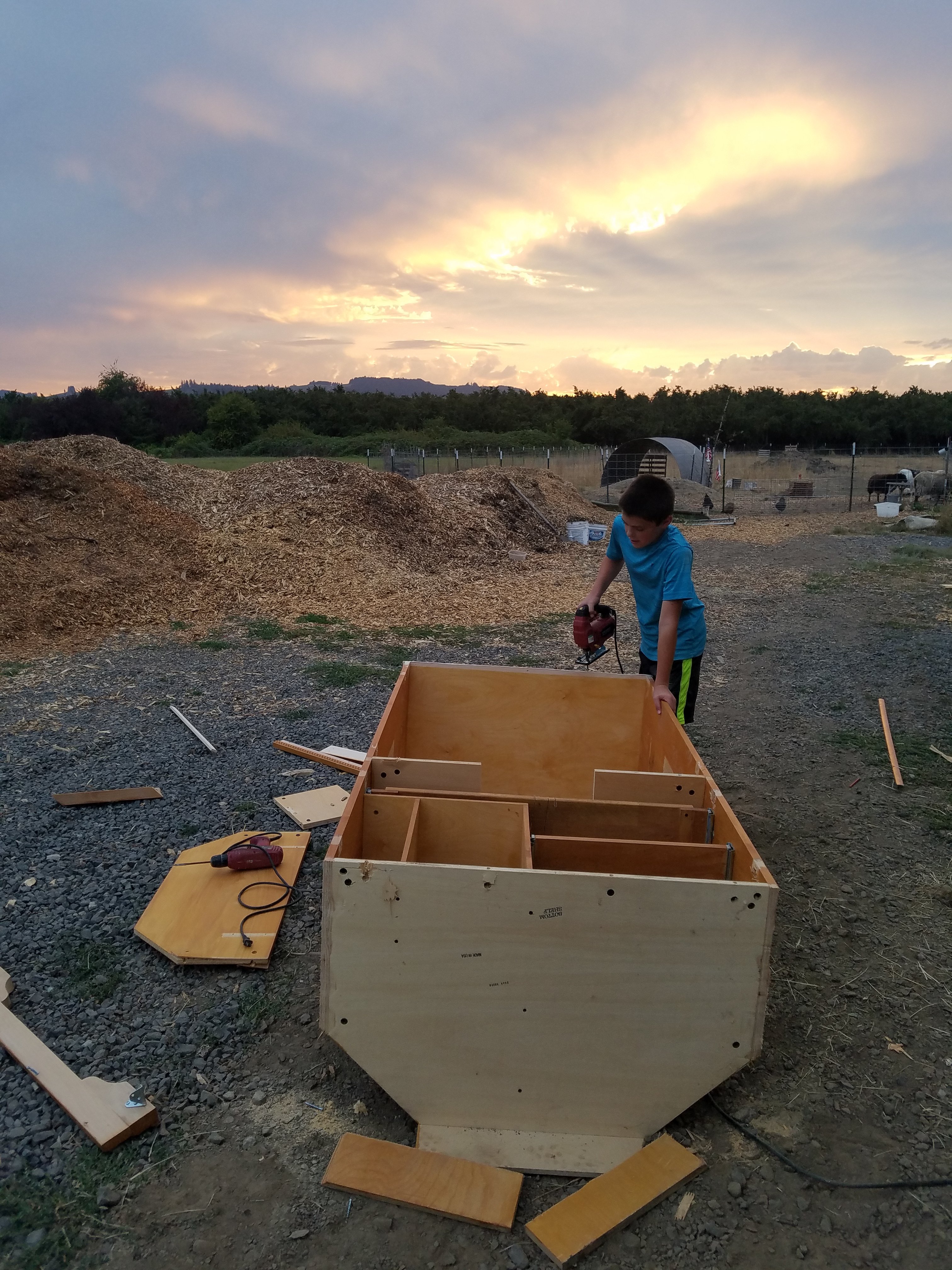
We left the garden in the care of Hannah for a week and came back to find destruction. My newly planted areas are completely dug up with huge holes, and the largest chard plant has been almost completely eaten. I’m guessing it’s the work of our non-egg-producing chickens. No yellow squash were picked all week, so I just had to pick five humungous ones that may be of no use to us.
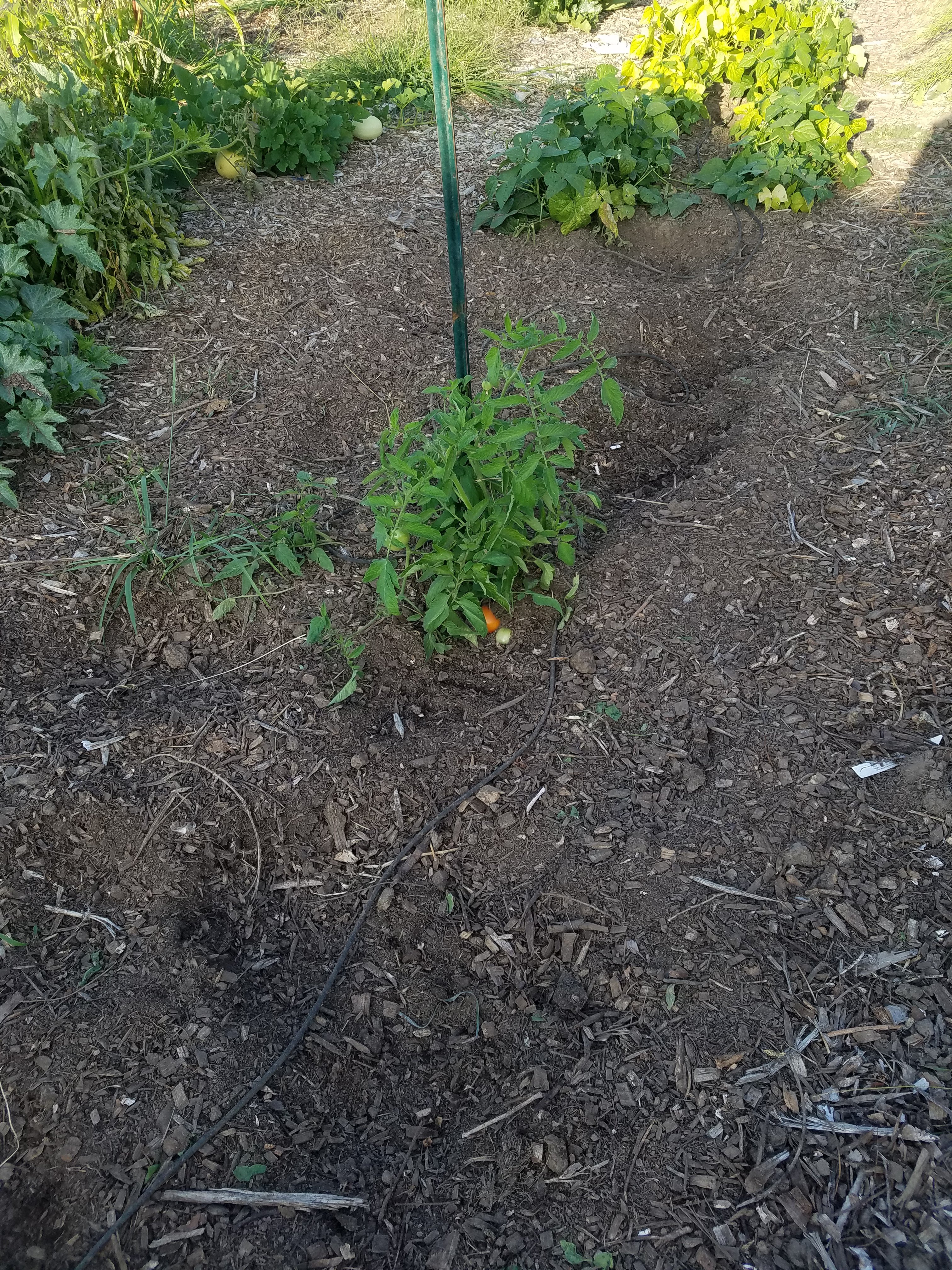
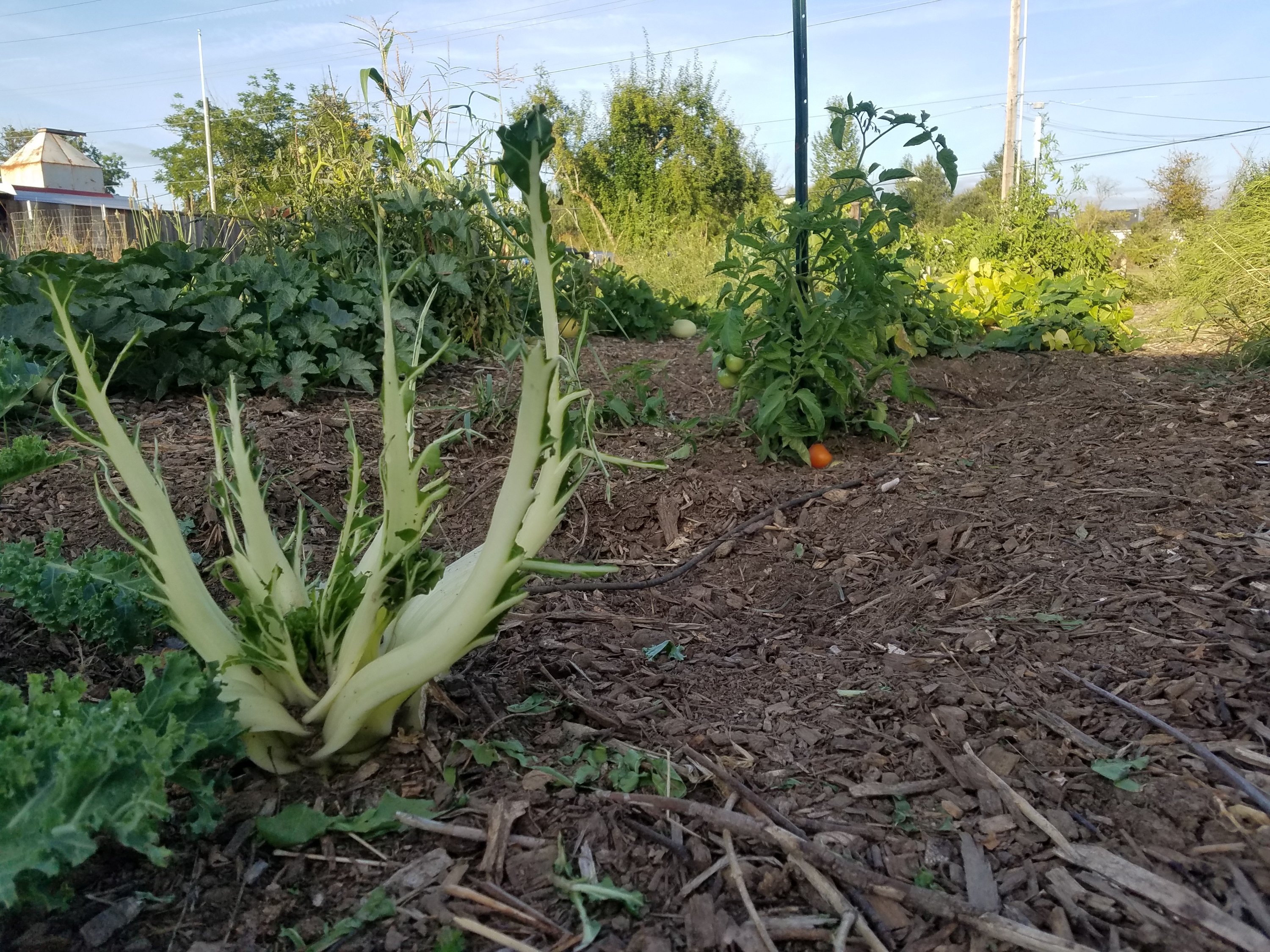
Got my first Mortgage Lifter tomato today.

I harvested the last of my peas, and I’m going to remove them from the pods and dry them. I pulled out the plants, too. In their place, I planted (from west to east) rainbow mix carrots, danvers half-long carrots (north), chantenay carrots (south), some marigolds by the tomato plant, bloomsdale spinach (north), cylindra beet (south), calabrese broccoli (north), and chioggia beet (south). I also tried running some twine around my tomato plant on the east end to get some of the tomatoes off the ground. In doing so, we accidentally harvested some green tomatoes.
